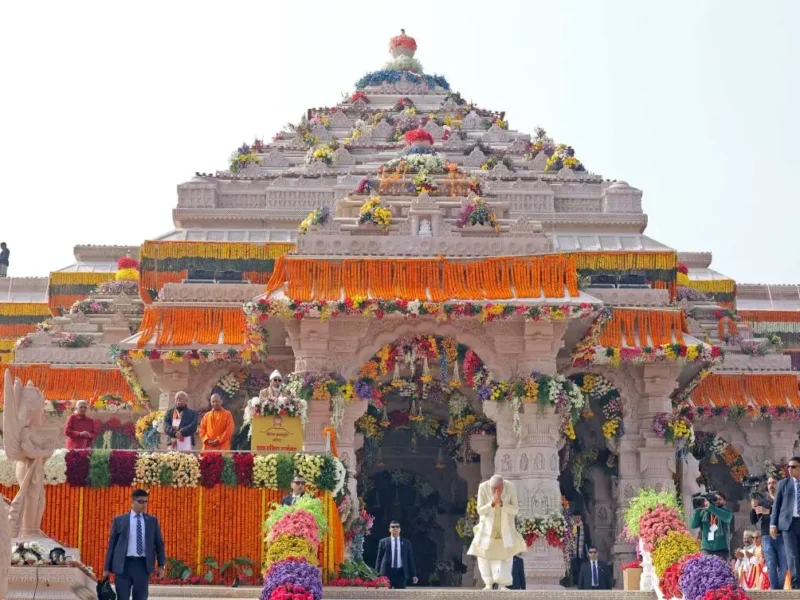
G7 Japan Summit: From Samurai To America’s Geisha
From Jugraj Singh, CA
Japan has a proud history of anti-imperialist struggle. Samurai means “to Serve” and belongs to the warrior class of feudal Japan. The classes of Japan were based upon the caste system of India and therefore the warrior class (like the Kshatriyas) had a high and prestigious social ranking. During my travels in America, I met many Japanese Exchange students attending Universities. They would tell me that a family’s social status in Japan is confirmed by being descendants of a Samurai.
Samurai were traditionally archers, and their sword techniques were refined later. The original swords of the Samurai were variations of Chinese swords and were straight and double-edged (Katana: The Sword of the Samurai, n.d.). The precursor to the modern Katana appeared during the early Heian period (700 CE) and the term “Katana” was first used to describe a sword during the Kamakura period (1185–1333 CE) (Katana: The Sword of the Samurai, n.d.).
Mongol Emperor Kublai Khan, the grandson of Genghis Khan, ordered a military invasion of Japan in November 1274. Khan’s troops invaded Tsushima Island. Ghost of Tsushima is a best-selling videogame that centers around this invasion. The Samurai fought valiantly with bows and arrows as Khan’s fleets were in the harbor but could not defend themselves in melee combat as the Mongols had tactics that the Samurai were not accustomed to and used gunpowder weapons such as bombs. After the Battle of Bun’ei (also known as the First Battle of Hakata Bay), Liu Fuxiang (Yu-Puk Hyong), one of the three commanding Generals of the Yuan (Mongol) Army, was grievously injured by an arrow to the face shot by Shōni Kagesukeone, a retreating Samurai (Delgado, 2008). After the battle, the Yuan Army left for Korea and did not attempt to return until the second invasion of Japan in June 1281.
The second invasion of Japan by the Yuan Army had similar locations and battles as the first invasion, with one significant difference. In August 1281, a great typhoon, known in Japanese as a Kamikaze (“Divine wind”) devastated the Mongolian navy and ended the invasion. This became the foundation for the concept of Kamikaze in Japanese culture meaning divine protection through nature against foreign enemies. It is also why Japanese pilots were given this title who attacked allied naval vessels, specifically American warships with their planes during World War II.
During the Meiji Restoration of 1868, the Samurai were abolished. After this period, the Samurai kept their warrior tradition alive through establishing martial arts schools. I have had the honor of studying many martial arts and began learning Karate at the age of five. I was curious where the Gi (white uniform in Japanese and other Eastern martial arts) came from and why there are no pockets. The Gi is the death attire of the Samurai. It was the belief of the Samurai that one should practice martial arts with such intensity that they are prepared to die while practicing, hence the necessity of wearing a Gi and no need for pockets as the dead do not take anything with them.
Films in the West such as The Last Samurai, 47 Ronin and Japanese films by brilliant Director Akira Kurosawa and the TV and film series Zatoichi display Samurai culture. My favorite film about Samurai and Bushido (the Way of the Warrior) is Ghost Dog: The Way of the Samurai. This film is a modern story set in an urban and inner city of America and the talented actor Forest Whitaker plays a hitman for the Italian mafia who lives his life as a modern Samurai, dedicating his life to Bushido and studying and applying principles of Bushido from Samurai textbooks such as Hagakure (which is also known as The Book of the Samurai).
Contrast Japan’s Samurai culture with the Geisha. The Geisha are Japanese women performers and entertainers who specialize in music, dance and singing. Historically, Geisha were also high-end prostitutes. The Hollywood film Memoirs of a Geisha highlights the ceremony of Mizuage, which was the loss of an apprentice Geisha’s virginity, and the repulsive auction and bidding war that commonly took place amongst the rich patrons.
During the Edo period (1603-1868), Japan followed Sakoku (an isolationist policy) and remained isolated from foreign diplomacy and trade for 220 years. This isolation was ended by an American military expedition in 1853 by Commodore Matthew Calbraith Perry. Commodore Perry reached Uraga (a subdivision of Yokosuka city) and commanded his ships to turn his guns towards Uraga (Beasley, 2002). Perry presented a white flag and a letter to the Japanese in which he threatened to destroy them if they chose to defend themselves (Schroeder, 2001 and Yosaburo Takekoshi, 2004), this gave rise to the term for American peaceful negotiation, Gunboat Diplomacy. Due to fear of America’s navy and because the Shogun was very ill and debilitated, the Japanese accepted a letter from Perry, paving the way for American hegemony and monopolization of Japan. Instead of armed resistance, which was the way of the Samurai, Japan essentially accepted American domination and became America’s Geisha.
Just as there was a white privilege in America, Japan used to enjoy Geisha privilege. After destroying Japan in World War II, America did not include Japan as a beneficiary of the Marshall Plan, which was economic aid for post-war Europe. After the war, U.S. General Douglas MacArthur served as supreme commander of the reconstruction efforts and wrote Japan’s new constitution because Japanese were not deemed intelligent or capable enough to write their own new constitution. Japan did benefit economically during the Korean War due to Japan serving as a staging area for American military forces.
An article in the BBC, Japan was the future, but it’s stuck in the past, discusses Japan’s past fortunes and present dismay. It is shocking that Japan’s real estate, once among the most expensive in the world, is in such bad condition that the author explains that a house now bought in Japan is worth less after moving in than the purchased price, and after paying off the mortgage (which takes decades), it is nearly worth nothing. The author notes that in the 1980s, Japanese were richer than Americans, and at present, Japanese are earning less than the British. To gain a sense of just how much the real estate of Japan was worth in the 1980s, the Japan Nakama Blog explains that between the 1950s and 1980s, a square foot of land in Tokyo was worth as much as $140,000; this made the Imperial Palace in Tokyo worth more than the entire state of California.
The 1980s were called “Baburu Jidai” (the bubble era). The author states that in 1991, the bubble burst, without explaining exactly why. The Nikkei (Japanese stock market) lost most of its value between December 29, 1989 (average stock price 38915.9) and August 18, 1992 (average stock price 14309.4), a loss of 63.2% (Shiller et al., 1996). Japanese households have become poorer over time. Data from Japan’s Ministry of Health, Labor and Welfare show that the average real annual household income decreased from 6.59 million yen ($50,600) in 1995 to 5.64 million yen ($43,300) in 2020.
Japan is the best example of the endpoint of western capitalism and democracy. Japan faces an existential crisis. Masako Mori, adviser to Prime Minister Fumio Kishida, has given a dire warning, “If we go on like this, the country will disappear.” Mori said this after the Japanese Ministry of Health announced that in 2022, almost twice as many Japanese died than were born: 799,728 births and more than 1.58 million deaths. According to data from the World Bank, at 48 years, Japan has the second oldest median age in the world, and the proportion of people aged 65 and over is more than 29%; a shrinking fertility rate of 1.34 children per woman; and a 2023 birth rate of 7.013 per thousand people (United Nations). Japan’s current population is 125,364,748. An article by Michael Cook on Mercator.net explains that in 2020, researchers predicted Japan’s population would decline from 128 million in 2017 to less than 53 million in 2100. This is a loss of more than 75 million people in less than 80 years. There is no need for anyone to fight Japan; western capitalism and democracy are doing an excellent job of ensuring that the Japanese go extinct.
The G7 summit is taking place in Hiroshima and the G7 leaders placed wreaths and planted trees at the Hiroshima Memorial Museum for the innocent victims of America’s atomic bomb attack on Hiroshima. President Biden, just like President Obama during his 2016 visit to Japan, and every American leader before him, has refused to apologize for America using nuclear weapons against Hiroshima and Nagasaki. National Security Adviser Jake Sullivan said that Biden will attend “as one of the G7 leaders coming to pay respects” and that Biden would be doing so both out of respect for history and for Prime Minister Kishida. So, what was the point of having America and its allies place wreaths and plant trees at the Memorial when they believe that America was right in nuking Japan? It would make sense if Japan had requested that instead of placing wreaths and planting trees, the leaders of the G7 countries urinate and defecate on the Hiroshima victims’ Memorial.
The fundamental difference between the East and the Third World (particularly Russia, India, and China) and Japan is that Japan has allied with the Western imperialist countries. Japan has sold its soul to America, betrayed the revolution, and is paying a terrible price. Is the Japanese extinction worth it?
(This submission has not been edited)




